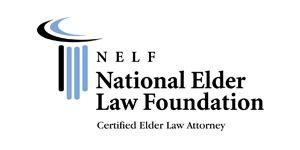HOW CAN WE HELP?
PRACTICE AREAS
AWARDS & ASSOCIATIONS
FOLLOW US
Alternative Living Arrangements – Types (Part 3)
A couple of weeks ago, we discussed when is a good time to talk with our loved ones about alternative living arrangements.
Next we talked about how to broach the subject in a way that facilitates receptiveness to the idea.
Today, to wrap up our three-part series, we’ll talk about the different types of alternative living arrangements.
If it is not feasible for your parent to remain safely in his or her own home (with assistance if needed), and it is also not realistic to move your parent into your own home, there are several different types of alternative living facilities that are appropriate for seniors at different stages of independence and dependence.
The 4 most common types include: Independent Living Facilities, Assisted Living Facilities, Nursing Homes, and Continuing Care Retirement Communities.
(1) Independent Living Facilities (ILFs)
These include senior apartments and congregate senior housing. The senior citizen leads an independent lifestyle that requires minimal or no extra help. These are most appropriate for seniors who are able to walk without assistance and prefer living in an environment where there are other seniors. Senior apartments are rental apartments restricted for lease to seniors only. They do not include services like meals, transportation, or social activities. Many seniors enjoy living near others of the same generation in these types of apartments. Congregate senior housing is a multiunit senior housing development that is paid for on a monthly basis. This fee usually includes supportive services, such as meals, housekeeping, social activities, and transportation.
(2) Assisted Living Facilities (ALFs)
These are group residential facilities that provide for daily meals, personal and other supportive services, health care, and 24-hour supervision. ALFs strive to give seniors as much privacy and autonomy as possible. They are most appropriate for seniors who need some assistance with activities of daily living, such as dressing, eating, or bathing, but who don’t need the level of medical care provided in nursing homes. The assisted living industry is the fastest-growing segment of the senior housing industry. ALFs are generally paid for through private funds, Social Security benefits, or long-term care insurance policies. Medicare does not pay for assisted living.
(3) Nursing Homes
These are facilities that provide 24-hour nursing care for seniors with long-term care needs. Medical supervision and rehabilitation therapy are typically available. Many homes offer dietary, therapeutic, social, and recreational services. Meals, laundry, housekeeping, and medical services are provided. The cost of nursing home residence is generally paid through private funds, Medicaid, Medicare (short-term only), or long-term care insurance.
(4) Continuing Care Retirement Communities (CCRCs)
These facilities are “all-in-one” communities in which a senior typically enters as healthy and independent and moves from one level of care to another as their needs change. CCRCs are for older adults who want the security of knowing that as they age, most of their long-term health care needs will be met within the retirement community without the need to relocate.
The post Alternative Living Arrangements – Types (Part 3) appeared first on Carney Dye, LLC.




